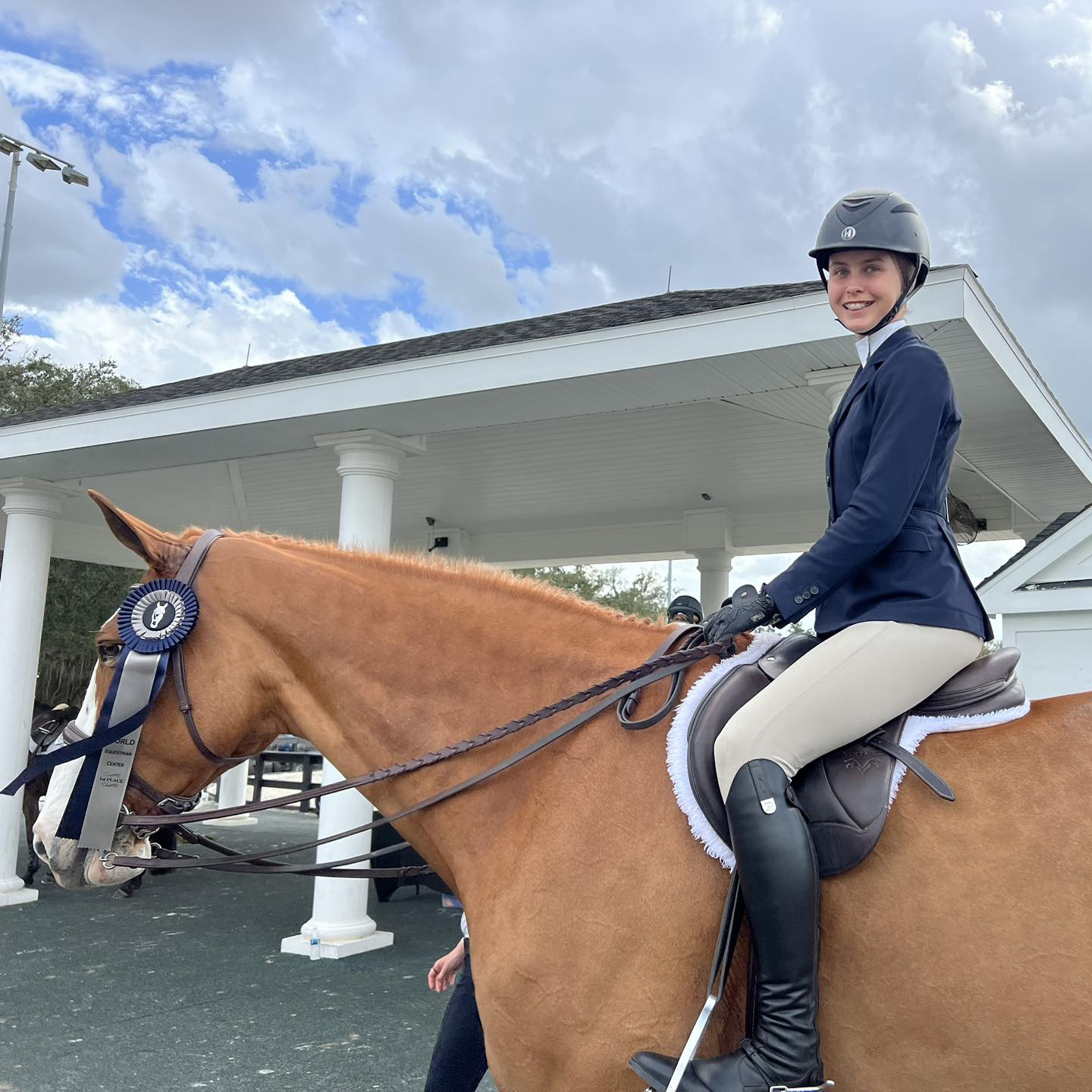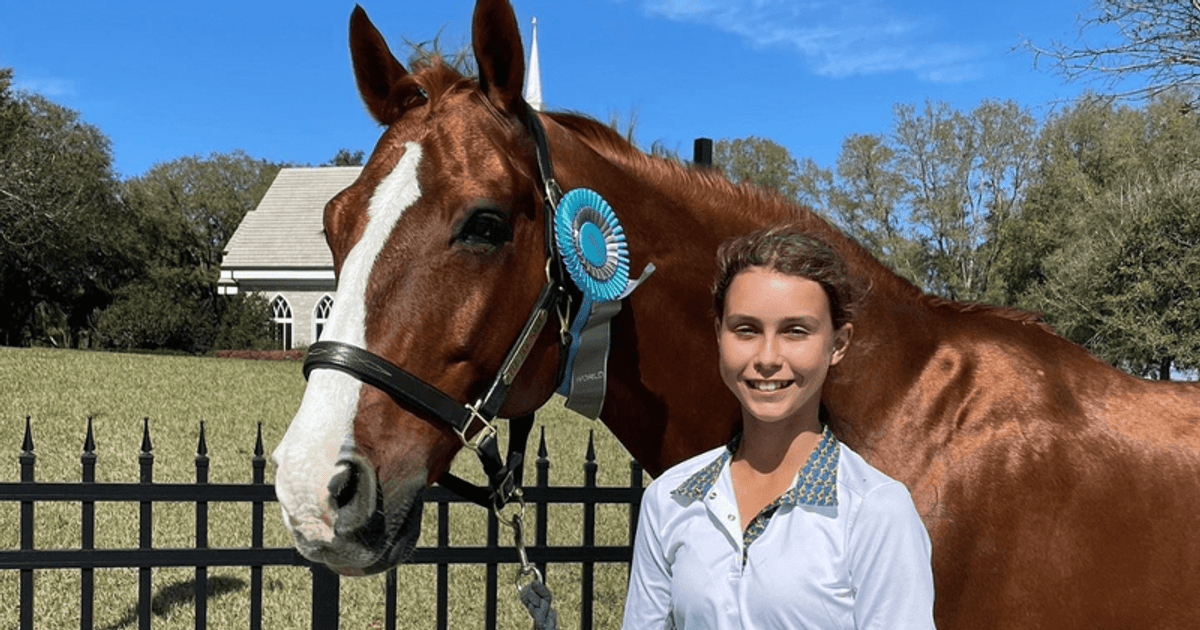Hannah Serfass Horse Accident Video Gone Viral

Attention Horse Lovers and Social Media Sleuths: The Hannah Serfass Horse Accident Video Has Sent Shockwaves Through the Equestrian Community!
In a disturbing and heartbreaking incident, a video capturing the tragic accident involving professional equestrian Hannah Serfass has surfaced online, raising concerns about safety and the ethics of sharing such sensitive footage.
This harrowing video has ignited a heated debate about the responsibility of those who witness and share graphic content, prompting questions about privacy, empathy, and the potential consequences for both the victim and her family.
Here, we delve into the key aspects related to the Hannah Serfass Horse Accident Video:
- The video's widespread circulation on social media platforms.
- The ethical implications of sharing graphic and private content without consent.
- The importance of respecting the privacy and well-being of those involved in such accidents.
- The role of the equestrian community in supporting and protecting its members.
Hannah Serfass Horse Accident Video Gone Viral
The widespread dissemination of the Hannah Serfass Horse Accident Video has raised critical questions regarding privacy, ethics, and the impact on the victim's well-being. Understanding the various dimensions of this incident is crucial for informed discussions and responsible actions.
- Privacy: Respecting the privacy of those involved, including the victim and her family.
- Ethics: Questioning the ethical implications of sharing graphic and sensitive content without consent.
- Consent: Emphasizing the need for explicit consent before sharing personal or private information. li> Compassion: Encouraging empathy and compassion towards the victim and her loved ones.
- Media Responsibility: Exploring the role of the media in reporting such incidents sensitively and responsibly.
- Social Media Impact: Examining the potential impact of social media platforms in spreading graphic content.
- Equestrian Community: Highlighting the importance of support and protection within the equestrian community.
- Legal Implications: Discussing potential legal consequences for those who share graphic content without consent.
These aspects are interconnected and require careful consideration. Striking a balance between public interest and the privacy of individuals is essential. The equestrian community, social media platforms, and the media have a shared responsibility to approach such incidents with sensitivity and respect.
Privacy: Respecting the privacy of those involved, including the victim and her family.
In the wake of the "Hannah Serfass Horse Accident Video Gone Viral," the issue of privacy has taken center stage. Respecting the privacy of those involved, including the victim and her family, is of utmost importance. This entails safeguarding their personal information, images, and details from unauthorized disclosure or exploitation.
- Confidentiality: Maintaining the secrecy and privacy of sensitive information, such as medical records, personal communications, and family history.
- Image Protection: Preventing the unauthorized use or distribution of photographs or videos that could cause embarrassment, distress, or reputational damage.
- Emotional Well-being: Shielding individuals from intrusive media attention and allowing them space to grieve and heal in private.
- Legal Rights: Upholding individuals' legal rights to privacy, including the right to control the use and dissemination of their personal information.
Respecting privacy in the context of "Hannah Serfass Horse Accident Video Gone Viral" means striking a balance between the public's right to information and the victim's right to privacy. It requires empathy, discretion, and a commitment to protecting the dignity and well-being of those involved.
Ethics: Questioning the ethical implications of sharing graphic and sensitive content without consent.
The "Hannah Serfass Horse Accident Video Gone Viral" has sparked a critical discussion on the ethical implications of sharing graphic and sensitive content without consent. This raises several important questions about privacy, respect, and the potential harm such actions can cause.
One of the primary ethical concerns is the violation of privacy. When graphic and sensitive content is shared without consent, it can be deeply intrusive and distressing for the individuals involved. In the case of the "Hannah Serfass Horse Accident Video Gone Viral," the victim was not only injured physically but also subjected to the further trauma of having her accident shared widely online without her knowledge or permission.
Moreover, sharing graphic and sensitive content without consent can have a profound impact on the victim's emotional well-being. Such content can be triggering and re-traumatizing, causing the victim to relive the distressing event repeatedly. It can also lead to feelings of shame, embarrassment, and isolation.
In addition to the ethical implications, there are also legal considerations to take into account. In many jurisdictions, sharing graphic and sensitive content without consent may constitute a violation of privacy laws or other legal protections. This can lead to legal consequences, including fines or even criminal charges.
It is important to remember that every individual has the right to privacy and bodily autonomy. This includes the right to control the use and dissemination of their own image and personal information. By respecting these rights, we can help to create a more ethical and compassionate online environment.
Consent: Emphasizing the need for explicit consent before sharing personal or private information.
Within the context of "Hannah Serfass Horse Accident Video Gone Viral," consent plays a crucial role in protecting the privacy and well-being of those involved. Explicit consent must be obtained before sharing personal or private information, including graphic and sensitive content, to safeguard individuals from potential harm.
- Respect for Autonomy: Consent ensures that individuals have control over their personal information and can make informed decisions about how it is used and shared.
- Protecting Privacy: By requiring explicit consent, individuals can protect their privacy and prevent the unauthorized disclosure of personal details.
- Preventing Harm: Obtaining consent can help prevent potential harm, such as emotional distress or reputational damage, that may result from the sharing of sensitive information.
- Legal Obligations: In many jurisdictions, there are legal obligations to obtain consent before sharing personal or private information, and failure to do so may result in consequences.
In the case of "Hannah Serfass Horse Accident Video Gone Viral," obtaining explicit consent from the victim before sharing the video would have been paramount. By respecting her privacy and bodily autonomy, individuals could have helped protect her from further trauma and distress.
Media Responsibility: Exploring the role of the media in reporting such incidents sensitively and responsibly.
In the wake of "Hannah Serfass Horse Accident Video Gone Viral," media responsibility is paramount in ensuring sensitive and ethical reporting. The media has a duty to inform the public while respecting the privacy and well-being of those involved.
- Accuracy and Verification: Reporting should be based on accurate information and verified sources to avoid spreading misinformation or causing further distress.
- Respect for Privacy: The media should respect the privacy of individuals involved, including obtaining consent before using their names, images, or personal information.
- Sensitive Language: The use of sensitive and respectful language is crucial to avoid sensationalism or retraumatizing victims and their families.
- Contextualization: Providing context and background information helps the public understand the incident without exploiting the victim's suffering.
By adhering to these principles, the media can play a responsible role in informing the public while upholding ethical standards and protecting the well-being of those affected by such incidents.
Social Media Impact: Examining the potential impact of social media platforms in spreading graphic content.
Within the context of "Hannah Serfass Horse Accident Video Gone Viral," social media platforms have played a significant role in the spread of graphic content. Understanding the potential impact of these platforms is crucial for mitigating their negative effects and promoting responsible online behavior.
- Rapid Dissemination: Social media platforms facilitate the rapid and widespread dissemination of content, including graphic and sensitive material. This can lead to the victim being re-traumatized and facing ongoing emotional distress.
- Lack of Control: Once graphic content is shared on social media, it can be difficult for the victim to control its spread or prevent it from being used in ways that are harmful or disrespectful.
- Sensationalism and Voyeurism: Social media platforms can encourage sensationalism and voyeurism, as users may share graphic content to attract attention or satisfy morbid curiosity.
- Erosion of Privacy: Sharing graphic content without consent can erode the victim's privacy and make them feel vulnerable and exposed.
Addressing the negative impact of social media on the spread of graphic content requires a multi-pronged approach involving platform regulation, user education, and ethical reporting practices. By working together, we can create a more responsible and compassionate online environment that respects the privacy and well-being of individuals.
Equestrian Community: Highlighting the importance of support and protection within the equestrian community.
Within the context of the "Hannah Serfass Horse Accident Video Gone Viral," the equestrian community plays a crucial role in providing support and protection for its members. This community, bound by a shared passion for horses and riding, offers a network of individuals who understand the unique challenges and risks associated with equestrian sports.
- Emotional Support: The equestrian community provides a supportive environment where members can share their experiences, offer encouragement, and provide emotional support during difficult times, such as accidents or injuries.
- Safety and Education: The community promotes safety and education by sharing knowledge, best practices, and safety protocols. This helps to reduce risks and improve safety standards within the sport.
- Advocacy and Representation: The equestrian community advocates for the rights and interests of its members. This includes representing their views to governing bodies, promoting legislation that enhances safety, and ensuring that equestrian sports are conducted in a fair and ethical manner.
- Crisis Response: In the event of an accident or emergency, the equestrian community often mobilizes to provide immediate assistance, support, and resources to those affected.
The equestrian community's unwavering support and protection of its members are essential for promoting a safe and inclusive environment for all who participate in equestrian sports. By fostering a culture of safety, camaraderie, and respect, the community helps to mitigate the risks and challenges associated with these activities and provides a sense of belonging and support for its members.
Legal Implications: Discussing potential legal consequences for those who share graphic content without consent.
Within the context of "Hannah Serfass Horse Accident Video Gone Viral," understanding the legal implications for sharing graphic content without consent is crucial. This involves examining potential legal consequences, including criminal charges and civil liability, for individuals who engage in such actions.
- Invasion of Privacy: Sharing graphic content without consent can violate an individual's right to privacy, leading to legal action for damages.
- Defamation: False or damaging statements made in the shared content can give rise to defamation claims, resulting in legal liability.
- Emotional Distress: Sharing graphic content can cause severe emotional distress to the victim, potentially leading to claims for compensation.
- Criminal Charges: In some jurisdictions, sharing graphic content without consent may constitute a criminal offense, such as harassment or distribution of obscene material.
Understanding these legal implications is essential to prevent potential legal consequences and protect the rights of individuals. Respecting privacy, avoiding defamation, minimizing emotional distress, and adhering to criminal laws are crucial considerations when dealing with graphic content.
The exploration of "Hannah Serfass Horse Accident Video Gone Viral" has illuminated crucial aspects related to privacy, ethics, and legal implications. The widespread circulation of the video raises concerns about consent, respect for privacy, and the potential harm caused by sharing sensitive content without authorization.
Key points to consider include the ethical obligations of individuals and media platforms in handling graphic content, the importance of respecting the privacy and well-being of those involved, and the legal consequences associated with sharing such content without consent. Understanding these interconnected issues is essential for fostering a responsible and compassionate online environment.
As we reflect on the significance of this topic, let us strive to prioritize empathy, privacy, and respect in our online interactions. Let's work towards creating a digital space where individuals' rights and well-being are protected, and where sensitive content is handled with the utmost care and consideration.
How to get a cao application number
Seth waugh wikipedia bio net worth wife
Nota baloyi s pic with singer tyla

Florida equestrian Hannah Serfass fatally crushed by horse NEWS BRIG

Hannah Micayla Serfass

Hannah Serfass Florida's rising equestrian star, 15, dies after horse
ncG1vNJzZmibn6Sxb7%2FFqGlnnJmctrWty6ianpmeqL2ir8SsZZynnWS1orrNmp9mq5Wns6K%2F0mafqKqjmnqir8Kim56mpGLDqrDEqGSgp56aere10ZqjZ6Ckork%3D